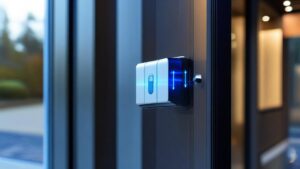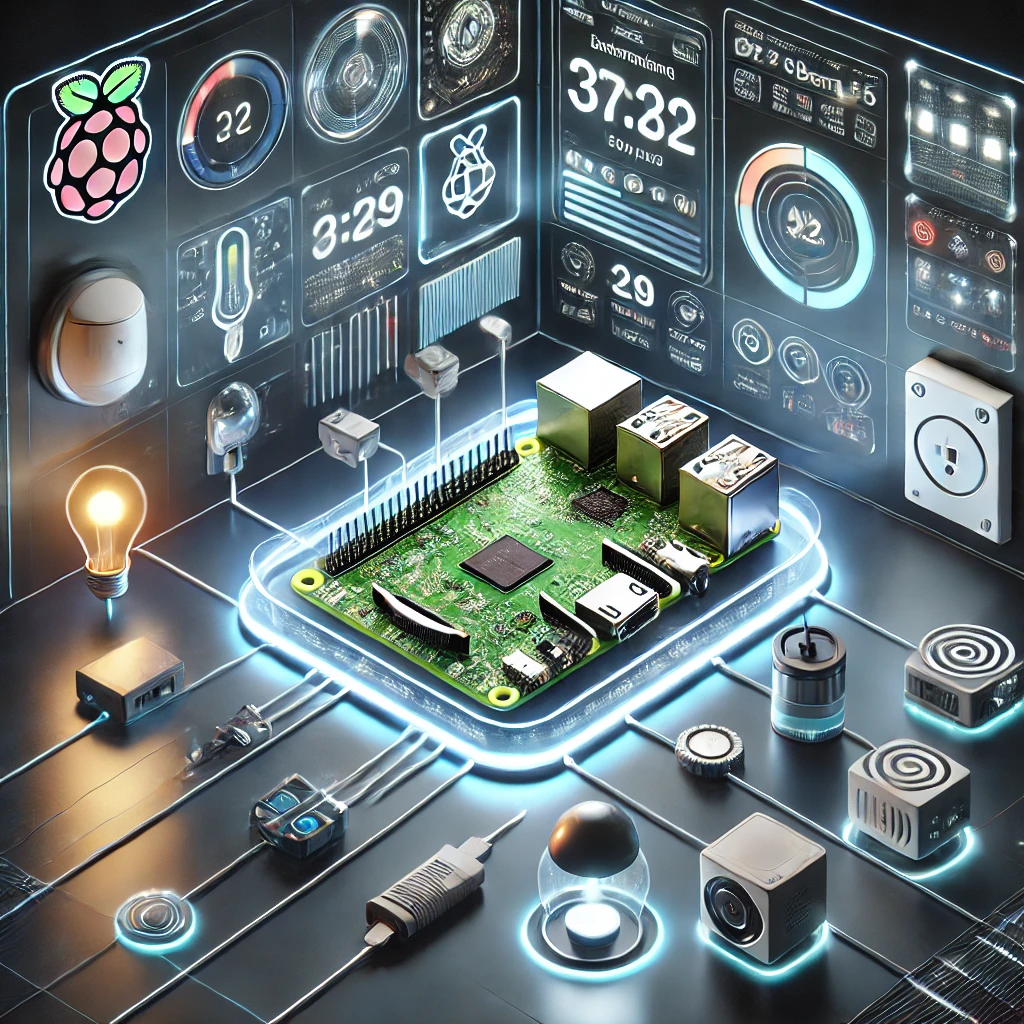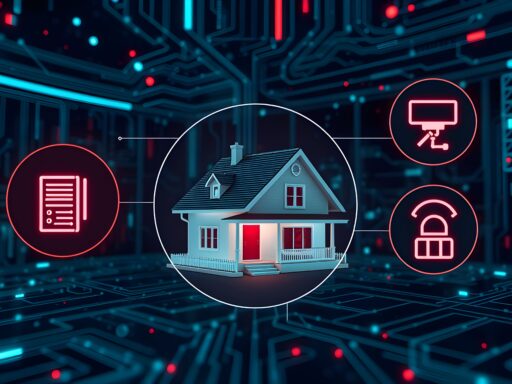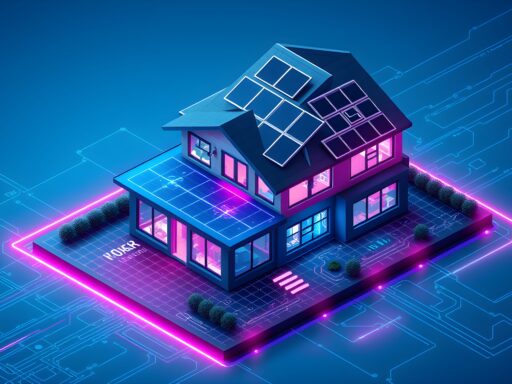Explore cutting-edge projects that can be done with the ESP32-H4, leveraging Bluetooth 5.4, Zigbee, and Thread support for smart home, IoT, and automation solutions.
Unlocking the Potential of ESP32-H4
The ESP32-H4 is a powerful new chip in the ESP32 family, offering advanced features such as Bluetooth 5.4, Zigbee, and Thread support. These capabilities make the ESP32-H4 perfect for building energy-efficient and reliable IoT devices, smart home systems, and mesh networks. In this article, we’ll explore several exciting projects you can build using the ESP32-H4, along with step-by-step instructions for each.
1. Smart Bluetooth 5.4 Mesh Lighting System
Project Overview:
With Bluetooth 5.4 support, the ESP32-H4 allows you to create a mesh network of smart lights that can be controlled centrally or individually. In this project, you will build a system where lights communicate with each other and automatically adjust based on occupancy or time of day.
Step-by-Step Instructions:
Step 1: Gather the Materials
- ESP32-H4 board
- LED light bulbs or strips
- Bluetooth 5.4 mesh-enabled components (LED controllers)
- Mobile app (like ESP Mesh App) for control
Step 2: Set Up the Bluetooth Mesh Network
- Flash the ESP32-H4 board with Bluetooth Mesh firmware (available in ESP-IDF).
- Configure each ESP32-H4 module as a node in the mesh, assigning one to act as the controller for the lights.
Step 3: Control the Lights
- Install a mobile app that supports Bluetooth Mesh.
- Set up automation rules, such as dimming the lights based on time or turning them on when motion is detected via connected sensors.
Step 4: Test and Expand
- Test the system by controlling lights individually and as a group.
- Expand the mesh network by adding more lights or connecting other Bluetooth 5.4-compatible devices.
2. Smart Home Automation Hub with Zigbee and Thread
Project Overview:
Using the Zigbee and Thread support in the ESP32-H4, you can build a smart home automation hub that connects and controls multiple smart devices such as lights, door sensors, locks, and thermostats.
Step-by-Step Instructions:
Step 1: Gather the Materials
- ESP32-H4 board
- Zigbee-enabled devices (e.g., smart bulbs, door sensors)
- Thread-compatible devices
- MQTT broker or Home Assistant for control
Step 2: Set Up the Hub
- Install ESP-IDF and flash the ESP32-H4 with the Zigbee2MQTT firmware to allow the ESP32-H4 to act as a Zigbee hub.
- Pair your Zigbee and Thread devices with the ESP32-H4.
Step 3: Set Up Automation Rules
- Use Home Assistant or MQTT to create automation rules.
- Example: Automatically lock doors when the system detects that no one is home.
- Control lights based on occupancy detected by Zigbee motion sensors.
Step 4: Control the System Remotely
- Set up mobile app control, allowing you to remotely manage all connected devices.
- Use the Zigbee and Thread protocols for reliable communication even in large homes or buildings.
3. Wearable Health Monitoring Device
Project Overview:
Leverage the low-power capabilities and Bluetooth 5.4 support of the ESP32-H4 to build a wearable health monitoring device that tracks vital data such as heart rate, temperature, and physical activity.
Step-by-Step Instructions:
Step 1: Gather the Materials
- ESP32-H4 board
- Heart rate sensor (e.g., MAX30102)
- Temperature sensor (e.g., DS18B20)
- OLED display for real-time data visualization
- Mobile app for Bluetooth communication
Step 2: Set Up the Sensors
- Connect the heart rate sensor to the ESP32-H4 using GPIO pins for data and power.
- Connect the temperature sensor in a similar way and configure the readings in your code.
Step 3: Program the ESP32-H4
- Install ESP-IDF and program the ESP32-H4 to read data from both sensors and display it on the OLED screen.
- Use Bluetooth 5.4 to transmit data to a smartphone app for further monitoring.
Step 4: Monitor and Test
- Test the device by wearing it and monitoring the data in real time through the OLED display and mobile app.
- Expand the project by integrating more health-related sensors, such as an accelerometer to track movement.
4. Real-Time Environmental Monitoring Station
Project Overview:
Create a real-time environmental monitoring station using the Zigbee capabilities of the ESP32-H4, which can measure temperature, humidity, air quality, and more in various environments such as homes, farms, or factories.
Step-by-Step Instructions:
Step 1: Gather the Materials
- ESP32-H4 board
- Environmental sensors (e.g., DHT22 for temperature/humidity, MQ135 for air quality)
- Solar panel and rechargeable battery (for outdoor setups)
- Zigbee-enabled sensors for wider coverage
Step 2: Set Up the Sensors
- Connect the environmental sensors to the ESP32-H4 GPIO pins.
- Set up solar power to provide continuous energy to the ESP32-H4 if placed in a remote or outdoor location.
Step 3: Program the ESP32-H4
- Write the code to collect data from the sensors and send the data over a Zigbee network to a central hub or cloud service for analysis.
Step 4: Create a Monitoring Dashboard
- Use a platform like ThingSpeak or Blynk to visualize the real-time data collected from the sensors.
- Set up alerts when certain thresholds are reached, such as poor air quality or high temperatures.

5. Secure IoT Door Lock System
Project Overview:
Using the Zigbee support of the ESP32-H4, you can create a secure IoT door lock system that is controlled via a mobile app, with real-time monitoring and alerts for unauthorized access attempts.
Step-by-Step Instructions:
Step 1: Gather the Materials
- ESP32-H4 board
- Zigbee-enabled door lock
- Zigbee motion sensor (optional for extra security)
- Mobile app for remote control
Step 2: Set Up the Door Lock
- Install the door lock and connect it to the ESP32-H4 using the Zigbee protocol.
- Use Home Assistant or another automation platform to create a control interface.
Step 3: Program the ESP32-H4
- Write code to manage the locking and unlocking of the door through the Zigbee network.
- Integrate the motion sensor to trigger alerts in case of any suspicious activity near the door.
Step 4: Set Up Remote Access
- Configure the system for remote access via a mobile app, allowing you to lock/unlock the door or receive alerts wherever you are.
Step 5: Test and Secure
- Test the system by simulating various scenarios, such as unlocking the door remotely or detecting motion.
- Add extra security layers by encrypting data sent between the ESP32-H4 and the mobile app.
Unleashing the Power of ESP32-H4 in IoT Projects
The ESP32-H4 is an incredibly versatile chip, offering advanced wireless communication capabilities with Bluetooth 5.4, Zigbee, and Thread support. With its low-power operation and robust security features, the ESP32-H4 can be used to create cutting-edge projects in IoT, smart homes, wearables, and more. These step-by-step guides should help you unlock the full potential of the ESP32-H4 for your own innovative projects.





